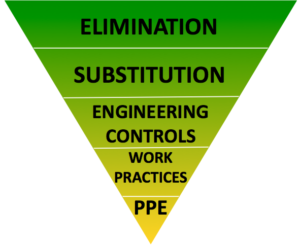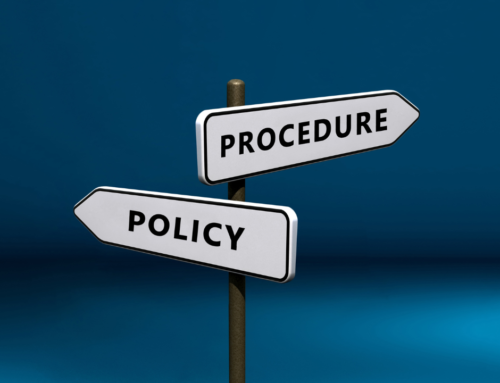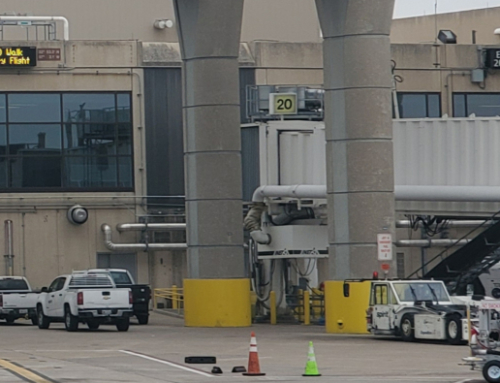Do we teach our employees what they need to know and do to take personal responsibility for their safety at work?
I was driving recently through a part of the city that I have been through frequently when I saw a police officer searching a backpack.
Nothing unusual about this you might think.
You may have seen this sort of thing happening yourself.
I was laser focused on one specific part of this scenario. The officer wasn’t wearing protective gloves as his hand dove into the depths of the backpack.
For me, this was simply horrific.
It speaks to the very core of what I am passionate about concerning safer workplaces.
Many of the situations that we find ourselves in when our own safety is in jeopardy are actually of our own doing.
A number of thoughts regarding possible explanations of this behavior were running through my head:
- Perhaps the officer had never actually been hurt by something his hand has come into contact with in a person’s backpack or a pocket during a search before.
- Perhaps (but unlikely), the training regarding the potential risks that the officer is exposed to during a search, had been missed.
- Perhaps the officer was in a rush and the fact that he would have to stop in order to put on his search gloves would have meant extra time.
- Perhaps he had left his search gloves at the office and therefore had no other option if the search was important.
- Perhaps (insert any number of other reasons here) …
Fast forward to the injury that could have occurred had this officer come into contact with something very nasty.
Full Disclosure from Phil:
When I was working as a young police constable in Notting Hill in London, a terrific sergeant that I worked with for several months, was searching a suspect’s pockets during the process of booking the person into custody at the police station when he received a needle injury. The sergeant contracted Hepatitis C very quickly and was taken from us a short time later. I have never forgotten that tragic event and the lesson inherent within it.
Back to the story…..
On the reverse side of the worker’s compensation claim form that is completed following a workplace injury, the supervisor who completes the form is required to complete a section on the form which speaks to the ‘contributing causes’ behind the incident which resulted in the injury and then to provide a comment on the ‘root cause’ of the incident.
Root Cause is defined as: The cause of a problem which, if adequately addressed, will prevent a reoccurrence of that problem.
Finally, that supervisor is required to provide recommendations to either eliminate the possibility of the incident from occurring again or at the very least to mitigate the chance of it occurring again.
Let’s take a look at that list of possible explanations (above) that would lead a police officer to put their unprotected hand into a backpack…receive an injury…and then answer this question: “How could this be prevented in the future?”
What answers do you come up with?
The answer sounds so simple doesn’t it?
And yet, time and time again, people are getting hurt by putting themselves in situations and doing things that in hindsight people point at say “Why did they do that?”
Near where I live in British Columbia, there is a canyon where cliff jumpers are regularly hurt (sometimes permanently) after jumping into the gorge from a challenging height.
“How could this be avoided?”
Insert “Sigh” here.
In terms of workplaces and job descriptions, can you make things 100% hazard or risk-free?
In the world of workplace violence prevention in the service industry for example, perhaps the only way to eliminate the possibility of employees dealing with irate, angry and perhaps aggressive customers is to do away with customers altogether? Is that reasonable?
Of course not…
So the ALARP principle is employed.
ALARP demands that the residual risk be reduced As Low As Reasonably Practicable.
In the world of organizational safety, there is a concept called the Hierarchy of Controls. This provides a trusted framework (shown graphically)  which we can then use to examine risks and hazards once they are identified in the workplace. We then use the graphic to eliminate them or, if we cannot eliminate them, examine in descending order, the other options.
which we can then use to examine risks and hazards once they are identified in the workplace. We then use the graphic to eliminate them or, if we cannot eliminate them, examine in descending order, the other options.
You will see in the graphic that the very last option is to reduce the risk to as low as reasonably practicable by using Personal Protective Equipment (PPE).
For our police officer friend searching the backpack, this would mean using his search gloves. Search gloves are specifically designed to be resistant to sharps found during these sort of searches.
How does all of this apply to you?
Well, it comes down to the essential rules of safety.
- Identify the HAZARD.
- Assess the RISK.
- Implement the CONTROL.
Employers have a legal responsibility to manage the health and safety of their workplace and their employees.
Look around you at your workplace.
Has the risk been reduced to ALARP?
When looking at hazards and risks, the Risk Assessment Matrix tool can be a great tool to help determine your level of exposure to hazards and risks in a workplace.
Although it is featured in Workplace Violence Prevention in 2016, it has utility for other workplace risks and hazards as well.
How does the story end?
As a parting comment, I want to share with you that I did see the police officer’s partner offer up his search gloves to the original officer – who smiled back in thanks, accepted them and then donned them before continuing the search of the backpack.
Phew!







Leave A Comment